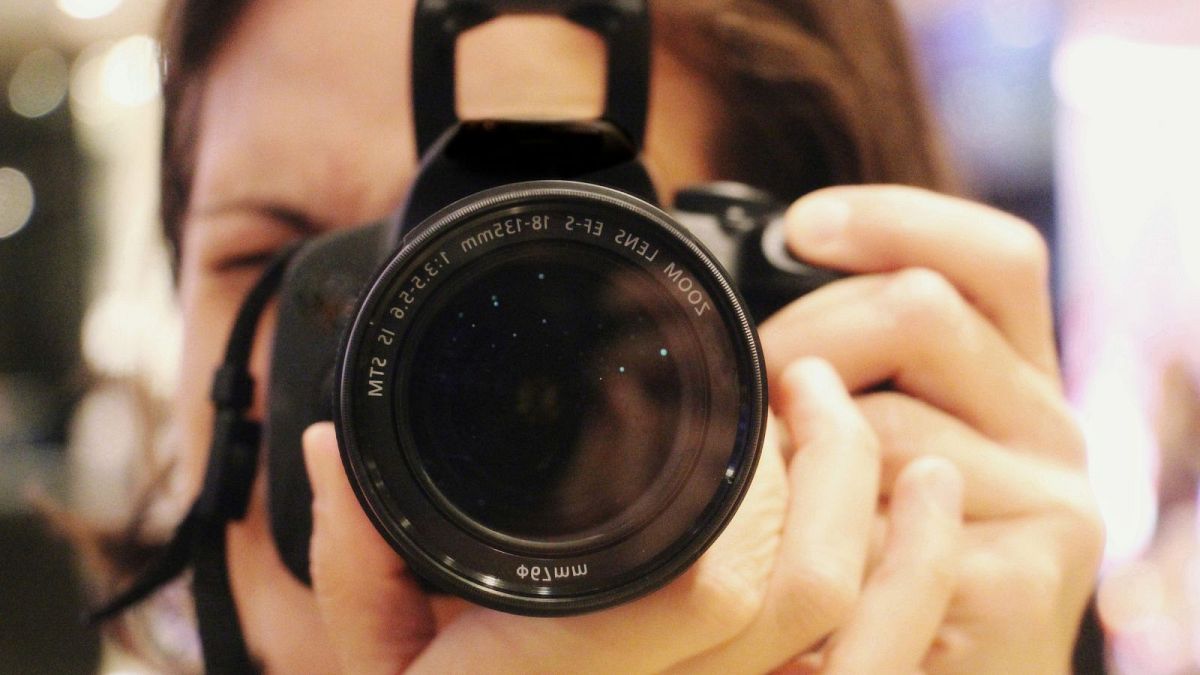The Euronews Culture team selects and shares its favourite photos for World Photography Day.
Today is World Photography Day, an annual celebration to raise awareness of the importance of photography.
The day dates back to 1837, when Frenchmen Louis Daguerre and Joseph Nicephore Niepce developed the daguerreotype, the first publicly available photographic process. It is held on this day to commemorate the French government’s declaration of a patent for this invention.
It is a day to celebrate photographers and their craft, document memories, and learn about other people and cultures through the medium of photography. Most importantly, to show that photography lovers from all over the world can enjoy an art form on a common platform that allows them to capture memories through a lens that can highlight or transcend the boundaries of reality.
The Euronews Culture team has selected its favourite photos and would like to share them with you today.
“Night Shot” – 2008
By: Olivier Metzger
My favorite photograph is the one that feels like looking into the warm light of an open-curtained window in the pitch black of night. I shouldn’t look, the life inside is secret. But in that brief moment, you catch a glimmer of people. An old Christmas tree, perhaps. A cat figurine with its ears broken off. The flicker of faces on the television. Fleeting fragments of something or someone that become still images that your mind must piece together to make meaning. This photograph by the late French photographer Olivier Metzger captures this quite literally.
In his 2008 “Nightshot” series, for which he won the BMW Special Prize, a woman stands on the phone, framed by a large window of light swallowed by darkness. Throughout his career, Metzger has been particularly fascinated by the night, playing with light and shapes to capture the cinematic essence of the world.
This one reminds me of an Edward Hopper painting in particular because it captures an unspoken moment; those oppressive realizations of loneliness and longing, enveloped in an artificial atmosphere. There’s something dreamlike about it, like sleepwalking into a place that’s only half familiar. There are small details in the house, a painting, some furniture – but it also feels hollow and fake, like a doll’s house floating in an abyss.
Though it is unsettling, I always feel that the hidden parts of myself are understood and released through such qualities in photography. The night may be dark and full of terrors, but it can also be the place where we find and rearrange parts of ourselves – or peek through strangers’ windows. Amber Bryce
“Louis Armstrong” – 1935
By: Edward Mouriquand
This photo has been with me for as long as I can remember. It was taken by my great uncle, who was a photographer and sadly passed away in his late thirties. He took snapshots of many musicians on tour and was allowed to go backstage with them. According to my late grandfather, who always told me that I reminded him of his late brother Edward, his brother was a huge jazz fan, so he was thrilled when he met the great Louis Armstrong.
The story goes that Satchmo was extremely charming, always paying attention to those around him and treating them to boisterous laughter. However, the legendary New Orleans trumpeter was not the least bit interested in talking about music or his craft. His main interest was food. Edward was apparently very disappointed that Armstrong could only talk about how much he liked French cuisine – especially offal – and kept asking my great-uncle where he should go to eat after the show.
The photo was passed down to my grandfather, who hung it in his study at home. Whenever I visited him, I would see that bright, smiling face on the wall – a face I associated with the smell of Drum tobacco (my grandfather’s vice of choice) – and there was something about Armstrong’s bright smile and sparkling eyes that always made me happy. I had no idea who the man in the photo was at the time – he was just this ray of sunshine in the room that mesmerized me. Later, I learned about Armstrong and grew to love his music. I became jealous that a family member I had never met got to meet a true music legend. And vice versa.
When my grandfather died, the photograph was passed down to me, and it is without a doubt one of my most treasured possessions. It reminds me not only of the power of intergenerational memories, of a life I never got to share with any of my relatives whose energy supposedly matched my own, but also that icons—no matter what artistic field they’re in—are people like the rest of us. They have desires that aren’t inflated because of their exalted status in popular culture; their desires can be simple, and no matter what significance they hold in history or how difficult the legacy they leave behind, we’re all human. Flawless. It’s worth appreciating the little things we take for granted—even if that’s carving a delicious meal.
I’ve kept that with me, and it’s even helped me when I interview a famous person: not to flatter, but to treat them with the respect you would show anyone else… and don’t forget to have a handy food recommendation ready in case they’re craving some hearty French food. Most of all, though, this image always fills me with joy. That’s the power of photography. When I catch Satchmo smiling at me out of the corner of his eye after a bad day, things don’t seem so bad after all. Life becomes tasty again. What a wonderful world, really. David Mouriquand
“Pale Blue Dot” – 1990
By: NASA
One photo I absolutely love is the iconic Pale Blue Dot.
To give you a little background, like many kids, I went through all sorts of formative phases: dinosaurs, LEGO, magic tricks, Michael Jackson – and then there was my space phase. My room was covered in Star Wars posters, I had a NASA lava lamp next to my bed, and I spent many nights playing with a cheap toy telescope that never worked properly. For my 8th birthday, I even insisted on a space party, complete with party rings, Space Raider chips, and an astronaut cake!
At the height of this space fascination, I saw the image “Pale Blue Dot” in a book at my library and was completely blown away. The image, taken by NASA’s Voyager 1 probe in 1990 from a staggering distance of 3.7 billion miles, shows the Earth as nothing more than a tiny speck – less than a pixel – against the terrifying but fascinating emptiness of space.
The photo was taken thanks to astronomer Carl Sagan, who suggested that Voyager should point its camera back at Earth as it left the solar system. As Sagan put it, “Look at this spot again. This is here. This is our home. This is us. It is where everyone you love, everyone you know, everyone you’ve ever heard of, every person who has ever lived, has spent their life.”
Today, at eight years old, I may not yet understand the magnitude of that existential perspective, but I remember being struck by how small the Earth looked in the grand scheme of things. As I grew older, I learned to appreciate the deeper meaning behind the image—the beautiful absurdity of human existence, the surreal, miraculous gift of life, and now more than ever, the growing realization of our responsibility to cherish and protect this tiny blue dot of wonder. Theo Farrant
“Russia-Ukraine War Festival” – 2024
By: Efrem Lukatsky (AP)
I’d be lying if I said this photo has stuck in my mind since I first saw it in June. Quite the opposite. In my job as a freelance journalist, I have to look at a lot of photos, some more challenging than others. This flood of images can make it difficult to sort through and remember the photos you’ve seen, even when they’re quite remarkable.
But when I was asked to choose an image to celebrate World Photography Day, I suddenly remembered a scene that gave me a moment of levity — and seemed to capture such a moment. Photographer Efrem Lukatsky (for the Associated Press) captured Ivana Kupala’s Midsummer Festival: so full of fire jumping, flower garlands and dancing that it’s easy to forget the bombings and power outages that have likely become a reality for many of those frolicking in this idyllic park an hour south of Kyiv.
What I love about this image is, in many ways, what I love about the whole series. The movements he captures, especially the jumping, convey a sense of freedom – a moment of letting go, of simply trusting that you can make it above the fire burning beneath you.
Participants told AP that this preservation of Ukrainian traditions was an act of resistance to the destruction of local culture, and I feel that sentiment comes through in the image, which is full of energy and – at least it seems to me, since I’m too cowardly to ever go fire jumping – courage. The crowds behind the main subjects also speak to themes of community and communal celebration, which I always enjoy in photographs. Elise Morton




